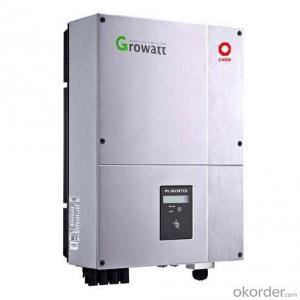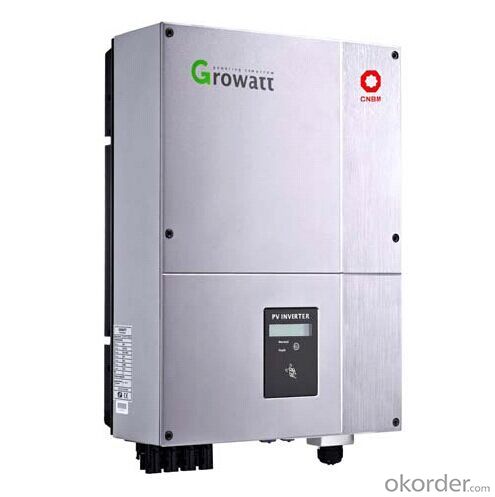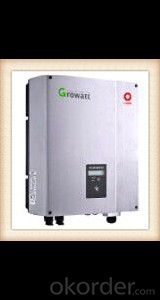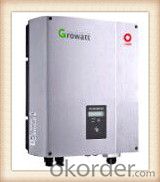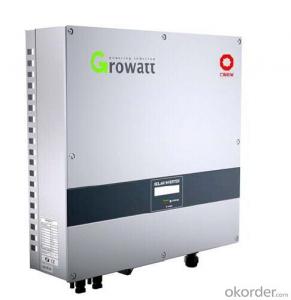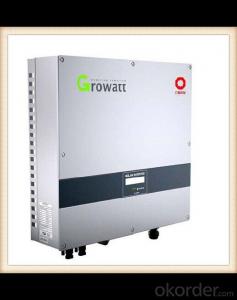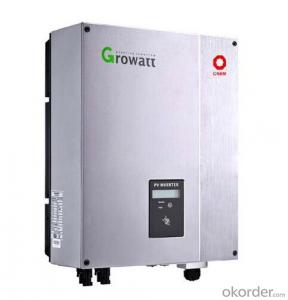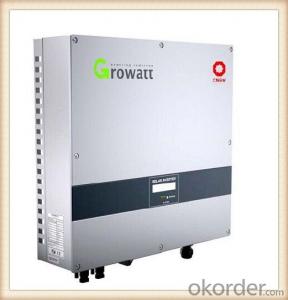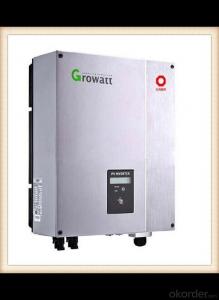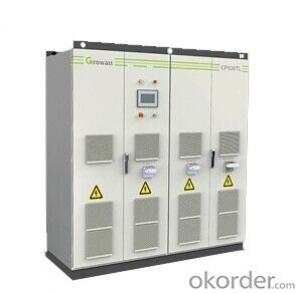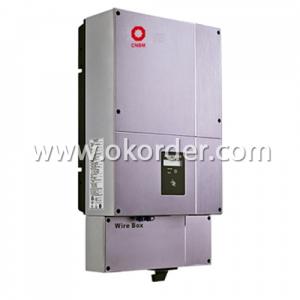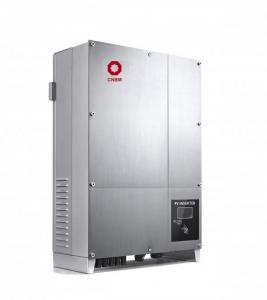CNBM-1500TL Off Grid Solar Inverter with Energy Storage Hybrid Solar Inverter
- Loading Port:
- China main port
- Payment Terms:
- TT OR LC
- Min Order Qty:
- 1000 watt
- Supply Capability:
- 100000 watt/month
OKorder Service Pledge
OKorder Financial Service
You Might Also Like
Introduction
CNBM-1000TL/1500TL/2000TL/3000TL/4000TL/4400TL/5000TL
Pure sine wave output
Microprocessor controlled to guarantee stable charging system
Multiple operations: Grid tie, Off grid, and grid tie with backup
Built-in MPPT solar charger
LCD display panel for comprehensive information
Multiple communication
Green substitution for generators
User adjustable charging current up to 25A
Maximum efficiency of 97.9% and wide
input voltage range
Wide MPPT voltage
Internal DC switch
Transformerless GT topology
Compact design
MTL – String
Multi-MPPT
Certificate: CE, VDE 0126-1-1,
DK5940, G83/1-1, G59/2, RD1663,
EN50438, VDE-AR-N4105, CEI-021,
IEC-62109, ENEL-Guide, UL1741,
UL1998, IEEE1547, CSA
Warranty: 5/10 years
Features
Maximum efficiency of 96.9% and wide input voltage range
Internal DC switch
MTL-String
Bluetooth/RF technology /wifi
Transformerless GT topology
5 years warranty(10years as optional)
Images
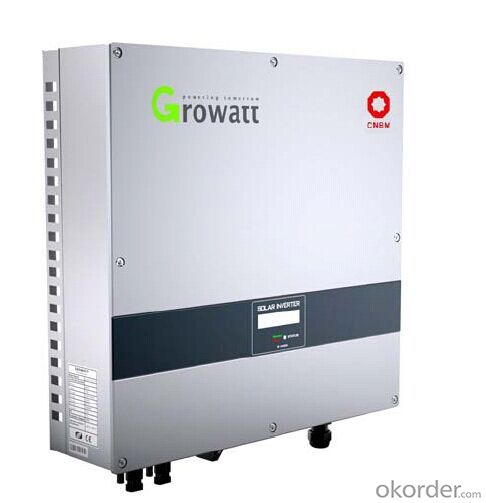
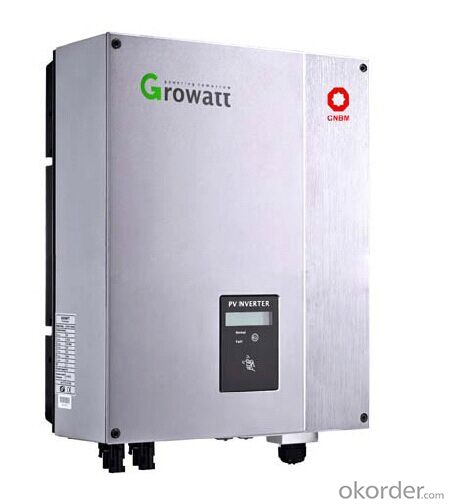
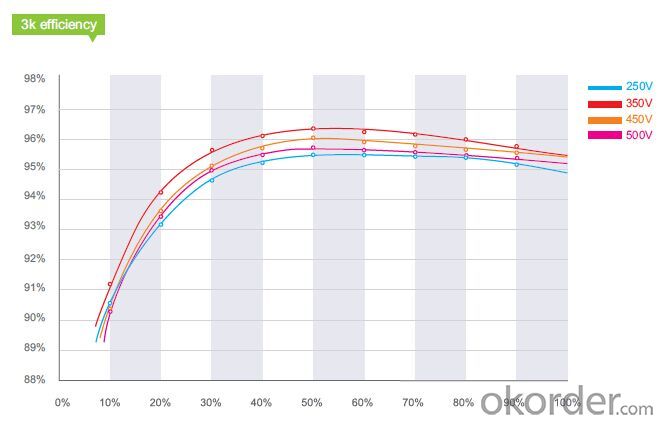
Sepecification
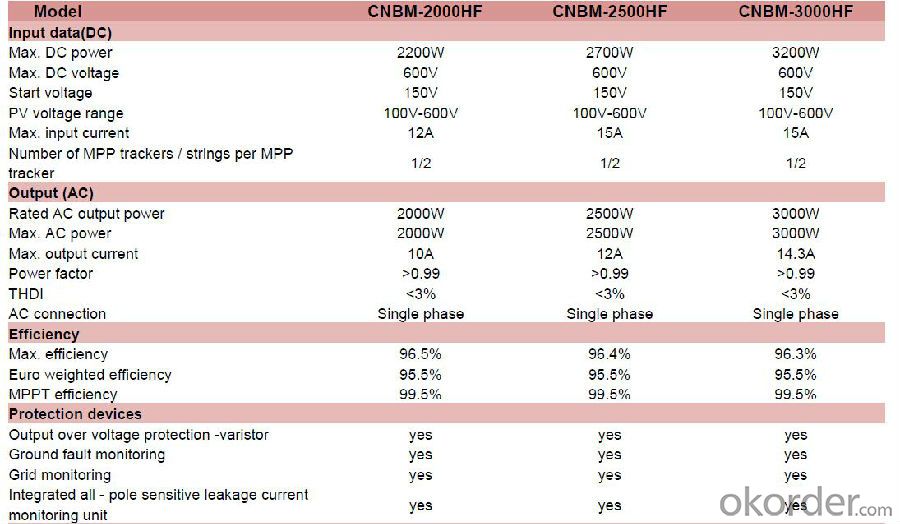

FAQ
Q1: How to choose a right inverter?
A1:Tell us your demand, then our sales will recommend a suitable inverter to you.
Q2: What's the different between inverter and solar inverter?
A2: Inverter is only accept AC input, but solar inverter not only accept AC input but also can connect with solar panel to accept PV input, it more save power.
Q3: How about the delivery time?
A3: 7 days for sample; 25 days for bulk order.
Q4: What is the warranty of inverter?
A4: 5/10 years warranty on CNBM-Solar product.
Q5: How to solve the technical problem?
A5: 24 hours after-service consultancy just for you and to make your problem to solve easily.
Q6: What is the lead time?
A6: One day after reveiving the payment.
Q7: Can I have a sample order?
A7: Yes, we welcome sample order to test and check quality. Mixed samples are acceptable.
Q8: How do you ship the goods and how long does it take arrive?
A8: Express (DHL,UPS,Fedex or TNT), Air or Sea shipment is available depends on your need. It usually takes 3-5 days to arrive except Sea transportation.
- Q: Are there any limitations on the number of solar panels that can be connected to a single inverter?
- The number of solar panels that can be connected to a single inverter is limited. Various factors, such as the inverter's power rating, the voltage and current ratings of the panels, and the system's configuration, determine the maximum number of panels that can be connected. In general, the inverter should be able to handle the combined power output of all the connected panels. If the panels generate more power than the inverter can handle, it can lead to inefficiencies, reduced performance, or damage to the inverter. Moreover, the panels' voltage and current ratings should be within the acceptable range of the inverter. If the panels exceed the inverter's safe limits, it can lead to overloading or malfunctioning. Furthermore, the configuration of the panels is also important in determining the limitations. Panels can be connected in series or parallel, each with its own requirements and limitations. The inverter must be compatible with the specific configuration used. To ensure proper functioning and optimal performance, it is advisable to refer to the manufacturer's guidelines and specifications for both the solar panels and the inverter. These guidelines provide information on the maximum number of panels that can be connected to a single inverter, as well as any other specific limitations or requirements to consider.
- Q: How does a solar inverter handle grid frequency deviations?
- A solar inverter handles grid frequency deviations by constantly monitoring the grid frequency. When the grid frequency deviates from the standard range, the inverter adjusts its output frequency accordingly to match the grid frequency. This allows the inverter to maintain synchronization with the grid and continue injecting power efficiently, ensuring stability and reliability of the solar power system.
- Q: Can a solar inverter work without batteries?
- Yes, a solar inverter can work without batteries. In a grid-tied solar system, the solar inverter converts the DC power from the solar panels into AC power that can be used in the household or fed back into the grid. Batteries are not necessary as the system relies on the grid for power supply during periods of low or no sunlight.
- Q: How does a solar inverter handle fluctuations in solar panel output?
- A solar inverter handles fluctuations in solar panel output by constantly monitoring the incoming DC power from the panels and adjusting its own output to match the required AC power demand. It utilizes Maximum Power Point Tracking (MPPT) technology to optimize the energy conversion process, ensuring that the inverter extracts the maximum power from the solar panels even if the output fluctuates due to factors like shading or varying sunlight intensity. This allows for a stable and reliable power supply to the electrical grid or connected devices.
- Q: What is the role of a power limiter in a solar inverter?
- The role of a power limiter in a solar inverter is to regulate and control the amount of power being fed into the grid from the solar panels. It ensures that the power output from the solar panels does not exceed the predetermined limit set by the utility company or regulatory standards. This helps prevent overloading of the grid and ensures the safe and efficient operation of the solar power system.
- Q: How is a solar inverter connected to the solar panels?
- A solar inverter is connected to the solar panels through a direct electrical connection. The DC (direct current) electricity generated by the solar panels is fed into the inverter, which then converts it into AC (alternating current) electricity suitable for use in homes and businesses.
- Q: How does a solar inverter handle voltage dips or surges in the grid?
- A solar inverter handles voltage dips or surges in the grid by incorporating various protective mechanisms. During a voltage dip, the inverter's control system detects the change and adjusts its power output accordingly to maintain a stable voltage and frequency. It may also utilize energy storage systems to compensate for the temporary drop in grid voltage. In the case of voltage surges, the inverter employs surge protection devices to prevent damage to the system. Additionally, advanced inverters may have built-in voltage regulation capabilities to stabilize the output voltage even during significant fluctuations in the grid.
- Q: Can a solar inverter be used for commercial applications?
- Yes, a solar inverter can be used for commercial applications. Solar inverters are commonly used in commercial settings to convert the direct current (DC) electricity generated by solar panels into alternating current (AC) electricity that can be used to power various commercial appliances and equipment.
- Q: Can a solar inverter be used with different types of power conditioning units?
- No, a solar inverter is specifically designed to work with solar power conditioning units. It may not be compatible with other types of power conditioning units such as wind or hydro power systems.
- Q: Are there any maintenance requirements for a solar inverter?
- Yes, solar inverters require regular maintenance to ensure optimal performance and longevity. This typically includes cleaning the unit and its surroundings to prevent dust buildup, checking for any loose connections or wiring issues, inspecting for physical damage, and monitoring the inverter's performance through regular system checks. Additionally, firmware updates and software upgrades may be necessary to enhance efficiency and address any potential issues.
Send your message to us
CNBM-1500TL Off Grid Solar Inverter with Energy Storage Hybrid Solar Inverter
- Loading Port:
- China main port
- Payment Terms:
- TT OR LC
- Min Order Qty:
- 1000 watt
- Supply Capability:
- 100000 watt/month
OKorder Service Pledge
OKorder Financial Service
Similar products
Hot products
Hot Searches
Related keywords
